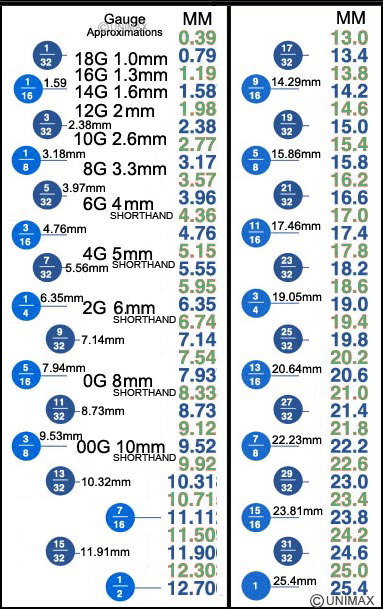
The gauge sizes of American Jewelry are the result of availability of product rather than a pre thought-out scheme of what would be suitable for piercing. Piercers today use even numbered gauge sizes (14-12-10-8, etc.) because odd numbered gauge sizes (13-11-9, etc.) were not normally used in wire applications so the material was not generally available for purchase.
For jewelry manufacturing what was available became the standard rather than what made sense for piercing jewelry. It was only when Asia became an affordable choice did jewelry sizes begin selling in millimeter sizes, an orderly progressive range of sizes.
The division of the inch (a standard unit of measurement in US) is required because very small sizes need to be measured and calculated with accuracy and a base of 10 is much easier to calculate with, rather than a base of 12. A shorthand unit is used to refer to "one one thousand of an inch" (a mouthful) and is called a "mil." (Not to be confused with mm for millimeter, or ml milliliter.) Use of this term is similar to other very familiar terms; like foot, acre and pound. For example, it is easier to talk, write and think about 2 "miles" than to calculate and use how many feet this would be once you approach larger numbers. Consider the difficulty of measuring mileage per gallon of gas in feet or inches rather than in miles per gallon. Because calculations in electronics deal with numbers that can be 18 digits long and more, it is much easier to use smaller representational units and limit the number to three digits followed by the "shorthand" unit unless greater accuracy is needed.
the smaller the size.